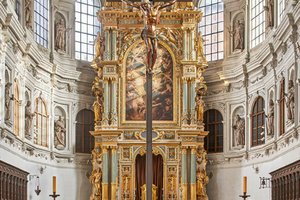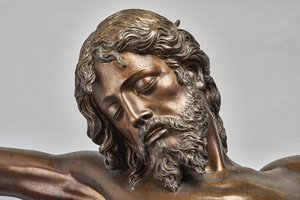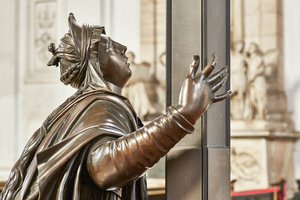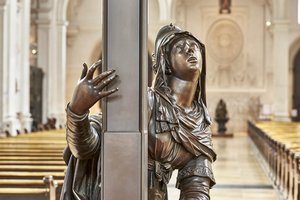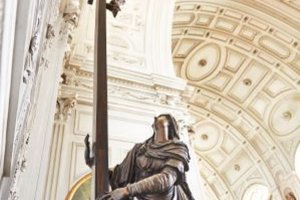In 2016 the crucifix by Flemish-Italian artist Giambologna returned to its place right in front of the people's altar, where it already had been standing for over 200 years, until 1819. St. Michael's has a clear central axis: from the infant Pantocrator underneath the organ loft to the returning Lord of the World at the top of the high altar. The axis traces the path of Jesus's life and suffering, via the cross, to glory. Its location between the side altars also means that Giambologna's crucifix is placed between the sacrifice of the Old and that of the New Covenant, thus centering the interior of the church.
The unique bronze sculpture is designed according to the Renaissance ideal of beauty. Hands and feet are nailed to the cross, but the body itself is unharmed and immaculately beautiful. This is a faithful vision of an inner reality, an expression of a paradox: in the man who is really martyred, the all-transforming love of God reveals itself. The body on the cross points ahead to the resurrection of the flesh. It testifies that the Risen One gathers his own people in every Eucharist. The members of the congregation celebrate the presence of their Lord. He guides them to unity, strengthens their faith, and gives them a future beyond death.
At the foot of the cross kneels Mary of Magdala. Her sculpture was created by Giambologna's German master student Hans Reichle. Mary symbolizes the faithful soul in need of redemption. Her pleading, painful gaze seeks the face of Jesus. Christian faith lives from an intimate union with Christ. The Spiritual Exercises of St. Ignatius want to guide us to nothing but this. The architecture of St. Michael is shaped by this idea, as are in fact all artworks in our church.
The juxtaposition of the two bronze figures in the center of the church represents the fundamental mystery of Christian faith: the mystery of the redemption of every human being through Jesus Christ, the Crucified and Risen One. This makes the imposing Renaissance building of St. Michael's a church in the most literal sense: "one that belongs to the Lord".
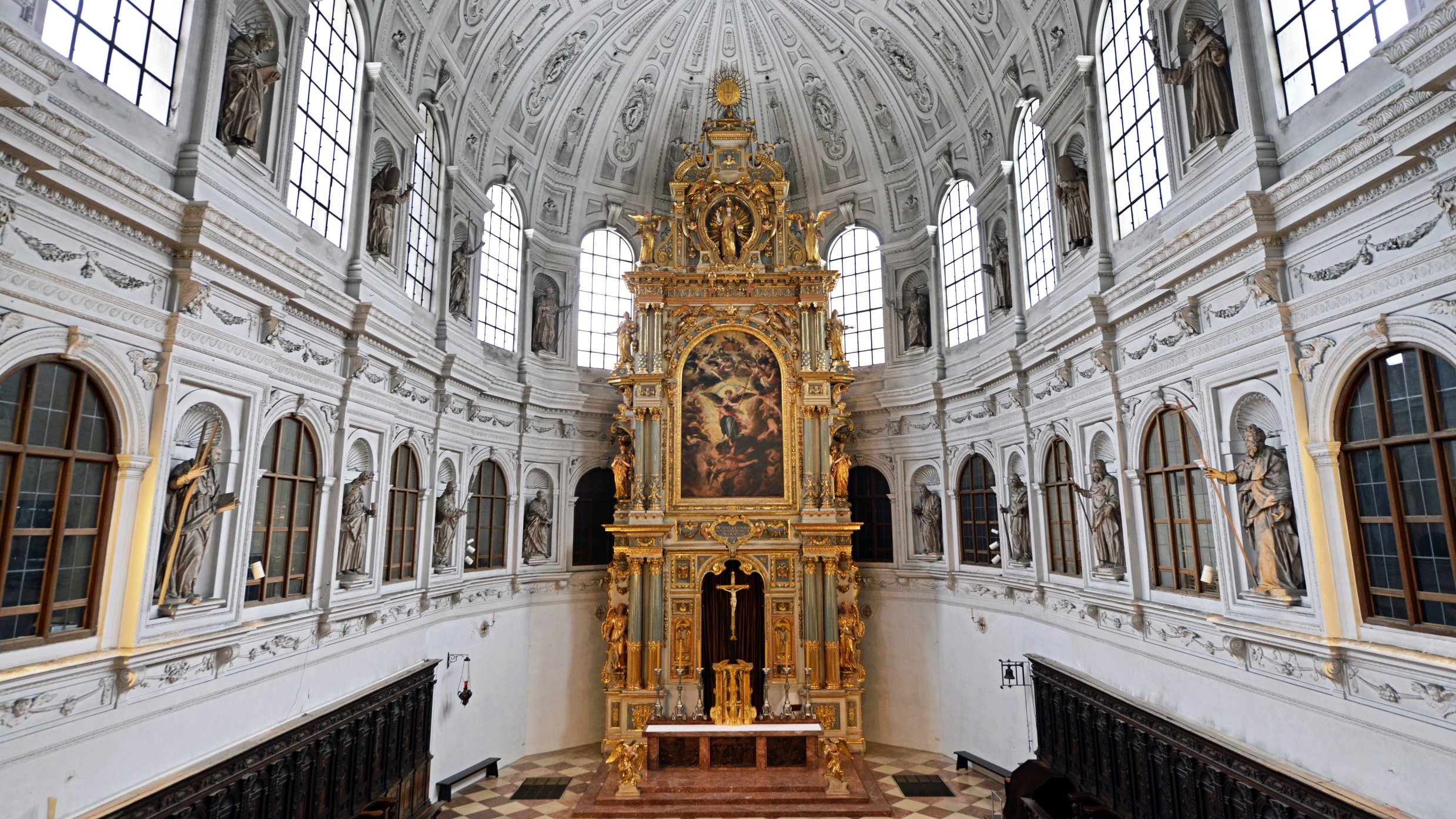
Architecture
St. Michael's is the first and largest Renaissance building north of the Alps. For more than two centuries the magnificent church influenced church building in southern Germany. The streets and alleys of Munich were narrow, as in all medieval cities. There was not enough space for admiring grand façades. St. Michael's was the first church in the city that was given such a monumental front wall, a façade (Italian: faccia, face). The new building was not oriented to the east like older churches, although the first plans still had envisaged this traditional alignment. Instead, the church was to be fitted into existing architectural structures of the city.
